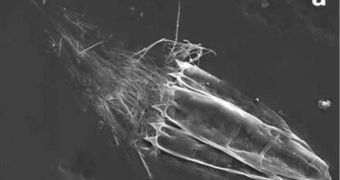Biologists have known for a long time that a wide variety of microorganisms live without oxygen. These anaerobic bacteria have been classified as a separate class of organisms, but thus far, researchers have never observed the ability in more complex creatures. This limitation was exceeded recently, as investigators peering deep under the Mediterranean Sea – that separates Europe from Africa – discovered multicellular organisms capable of conducting oxidation in the cells without oxygen.
Inside the harshest environments of the oceans, hydrothermal vents, giant worms indeed appear to be living without oxygen, but recent work has suggested that the animals actually rely on dissolved oxygen to breathe. In order to find a multicellular organism that indeed lives without oxygen, researchers at the polytechnic university of Marche, in Ancona, Italy, led by expert Roberto Danovaro, conducted three expeditions over the past decade. They focused their investigations in an area on the southern coast of Greece.
This is a very deep, hyper-salty basin in the Mediterranean, which is located some 3,250 meters (10,000 feet) below the surface of the water. The mud environment here is completely lacking in oxygen, and the team therefore took samples from this location repeatedly. In addition to having no oxygen, these basins also contain elevated levels of toxic sulfides. Danovaro says that the team was looking for multicellular organisms, in addition to the viruses, bacteria and microbes they were expecting to find.
Previous investigation had established the presence of multicellular organism remains in the mud, but researchers had hypothesized that they were not endemic to the location. It was widely thought that they had sunk from the upper layers of the sea, where the water was oxygenated. But “our results indicate that the animals we recovered were alive. Some, in fact, also contained eggs,” the team leader says. The group of creatures found in the samples were identified as being loriciferans, organisms that resemble the shape of jellyfish exiting from shells of a conical shape.
“Are there metazoans on other planets with atmospheres different from our own? Our ability to answer this question would be strengthened considerably by more intensive studies of animal-microbe interactions in extreme settings of our own inner space – the deep ocean,” states expert Lisa Levin, who is a biological oceanographer at the San Diego, California-based Scripps Institution of Oceanography. Details of the new work appear in the April 6 online issue of the esteemed scientific journal BMC Biology, LiveScience reports.

 14 DAY TRIAL //
14 DAY TRIAL //